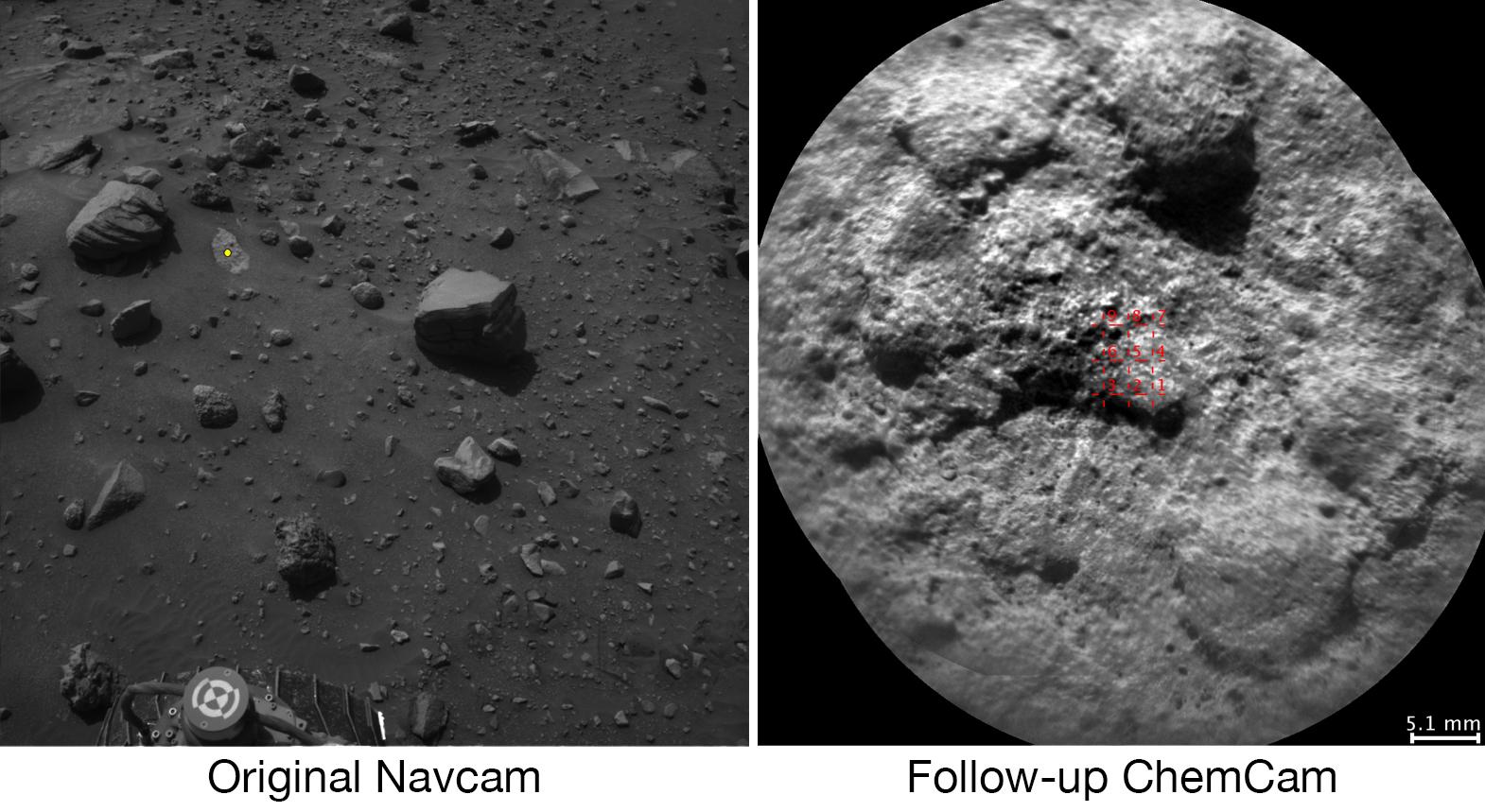
Look out, Mars: NASA's Curiosity rover can now fire its onboard laser all by itself.
The car-size Curiosity rover recently began autonomously choosing some of the targets for its ChemCam instrument, which blasts Martian rocks or soil with a laser and analyzes the composition of the resulting vapor.
Mission scientists here on Earth still select most ChemCam targets, after poring over images captured by the rover, NASA officials said. But Curiosity's increased independence comes in handy.
"This autonomy is particularly useful at times when getting the science team in the loop is difficult or impossible — in the middle of a long drive, perhaps, or when the schedules of Earth, Mars and spacecraft activities lead to delays in sharing information between the planets," robotics engineer Tara Estlin, of NASA's Jet Propulsion Laboratory in Pasadena, California, said in a statement.
Estlin led the development of the software that allows Curiosity to pull ChemCam's trigger automatically, which is called Autonomous Exploration for Gathering Increased Science (AEGIS).
"To select a target autonomously, the software's analysis of images uses adjustable criteria specified by scientists, such as identifying rocks based on their size or brightness," NASA officials wrote in the same statement. "The criteria can be changed depending on the rover's surroundings and the scientific goals of the measurements."
ChemCam sits atop Curiosity's head-like mast. The instrument can investigate the composition of a target that is up to 23 feet (7 meters) away from the rover.
Get the world’s most fascinating discoveries delivered straight to your inbox.
The $2.5-billion Curiosity mission touched down inside Mars' 96-mile-wide (154 kilometers) Gale Crater in August 2012, tasked with determining if the area had ever been capable of supporting microbial life. Using a suite of different instruments, the rover quickly found evidence that Gale was a potentially habitable lake-and-stream system billions of years ago.
During its nearly four years on Mars, Curiosity has used ChemCam to analyze more than 1,400 targets, firing off more than 350,000 laser blasts in the process, NASA officials said.
Follow Mike Wall on Twitter @michaeldwall and Google+. Follow us @Spacedotcom, Facebook or Google+. Originally published on Space.com.





